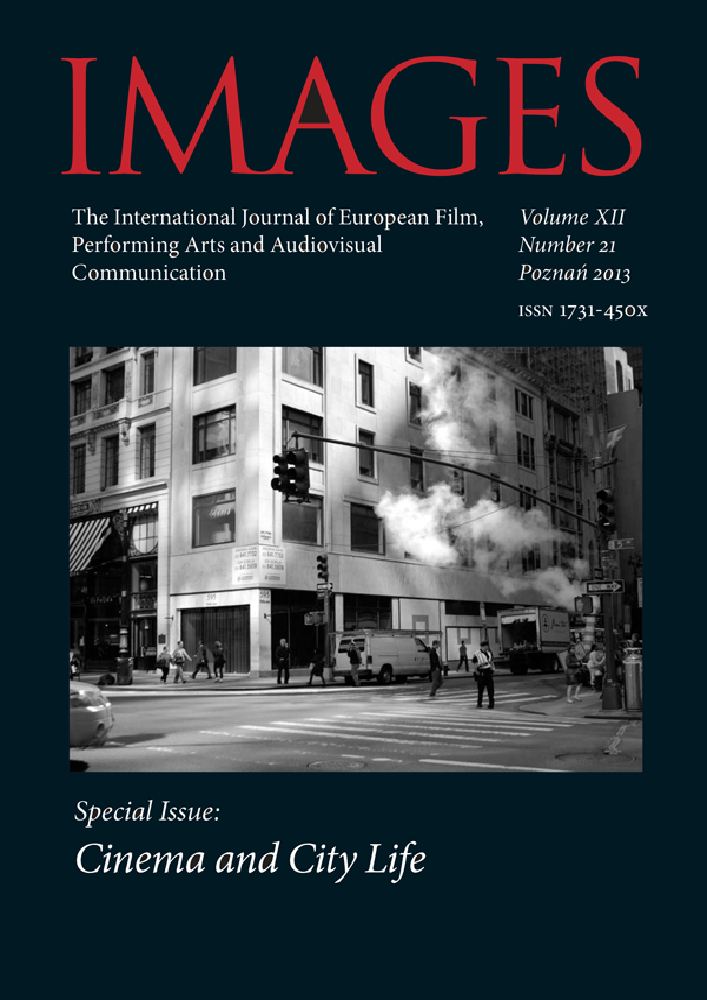Abstrakt
Madrid on film and in painting. About Goya’s Ghosts by Milos Forman
If Milos’s Forman target in Amadeus was to present Mozart’s music as dramatis personae, then in Goya’s Ghosts everything revolves around the paintings of Goya, which he perceives in a way that is not based on the artist’s biography.
He was far from wanting to direct a movie about Goya, as he cared solely about picturing the demons that were haunting the artist. His point of view on the works of this great Spaniard was one of widely understood referentiality that stemmed from his being convinced of the documental understanding of historical facts. This is noticable both in reference to Los Caprichos (1797-1798) and to Los desastres de la Guerra (1810-1820), but mostly it evinces itself in paintings crafted for the court and paintings that were created to document Spanish protest against the French occupants who had occupied Goya’s fatherland.
It helped to integrate paintings showing Madrid and its surroundings into a flow of movie pictures, which determined the notability of Forman’s film, but it also led to the non-recognition of the agenda of freedom inscribed in Goya’s creations; the consequences were that Forman misread the painter’s intentions and interpreted both of the oeuvres too realistically – Los Caprichos and Los desastres de la guerra, not excluding such works as historical paintings and portraits. The summary includes remarks about visible transfer from formal art to informal art, from manor painting to the intronisation of “liberalism in art”.
Bibliografia
ścieżka dźwiękowa „Duchów Goi” Miloša Formana i dodatków do filmu pochodzą z nagrania na DVD (Monolith Video, b.r.; dystrybu¬cja: Monolith Films Sp. z o.o.).
J. Edwards (Inkwizycja hiszpańska, przeł. M. Urbański, Grupa Wydawnicza Bertelsmann Media / „Fakty”, Warszawa 2002, s. 132.
H. Kamen, Inkwizycja hiszpańska, przeł. K. Bażyńska-Chojnacka, P. Chojnacki, PIW, Warszawa 2005, s. 278.
J. Traeger, Goya. Die Kunst der Freiheit, Verlag C.H. Beck, München 2000, s. 56.
R. Hughes, Goya. Artysta i jego czas, przeł. H. Jankowska, Wydawnictwo W.A.B., Warszawa 2006, s. 150.
F. Cardini i M. Montesano, Historia inkwizycji, przeł. E. Łukaszyk, Wydawnictwo WAM, Kraków 2008, s. 58.
J. Traeger, Francisco Goya: „Die Familie Karls IV. von Spanien”. Überlegungen zur Bildgestalt und Bildaussage, w: Kunst in Hauptwerken: Von der Akropolis zu Goya, hrsg. von J. Traeger, Mittelbayerische Druckerei- und Verlags-Gesellschaft mbH, Regensburg 1988, s. 274 („Schriftenreihe der Universität Regensburg”, t. 15).
Licencja
Copyright
© 2013 Uniwersytet im. Adama Mickiewicza w Poznaniu
OPEN ACCESS
